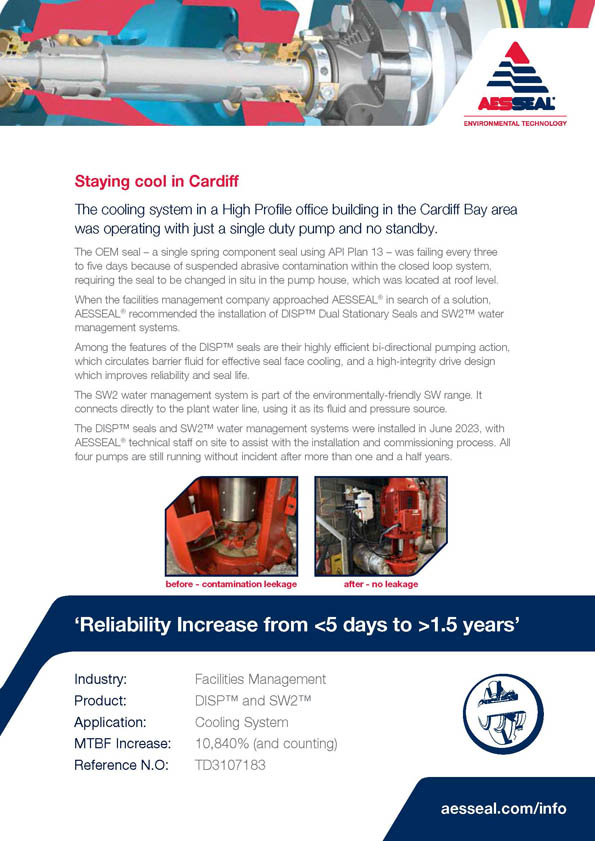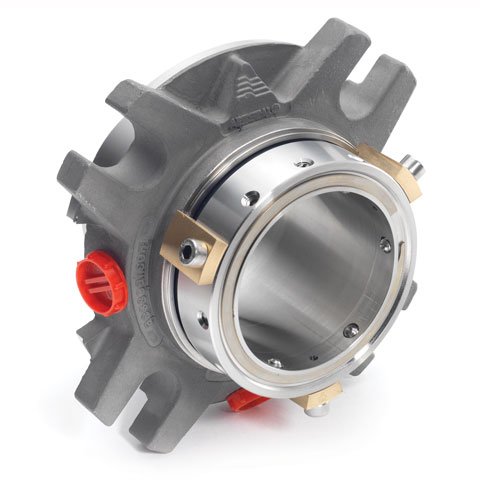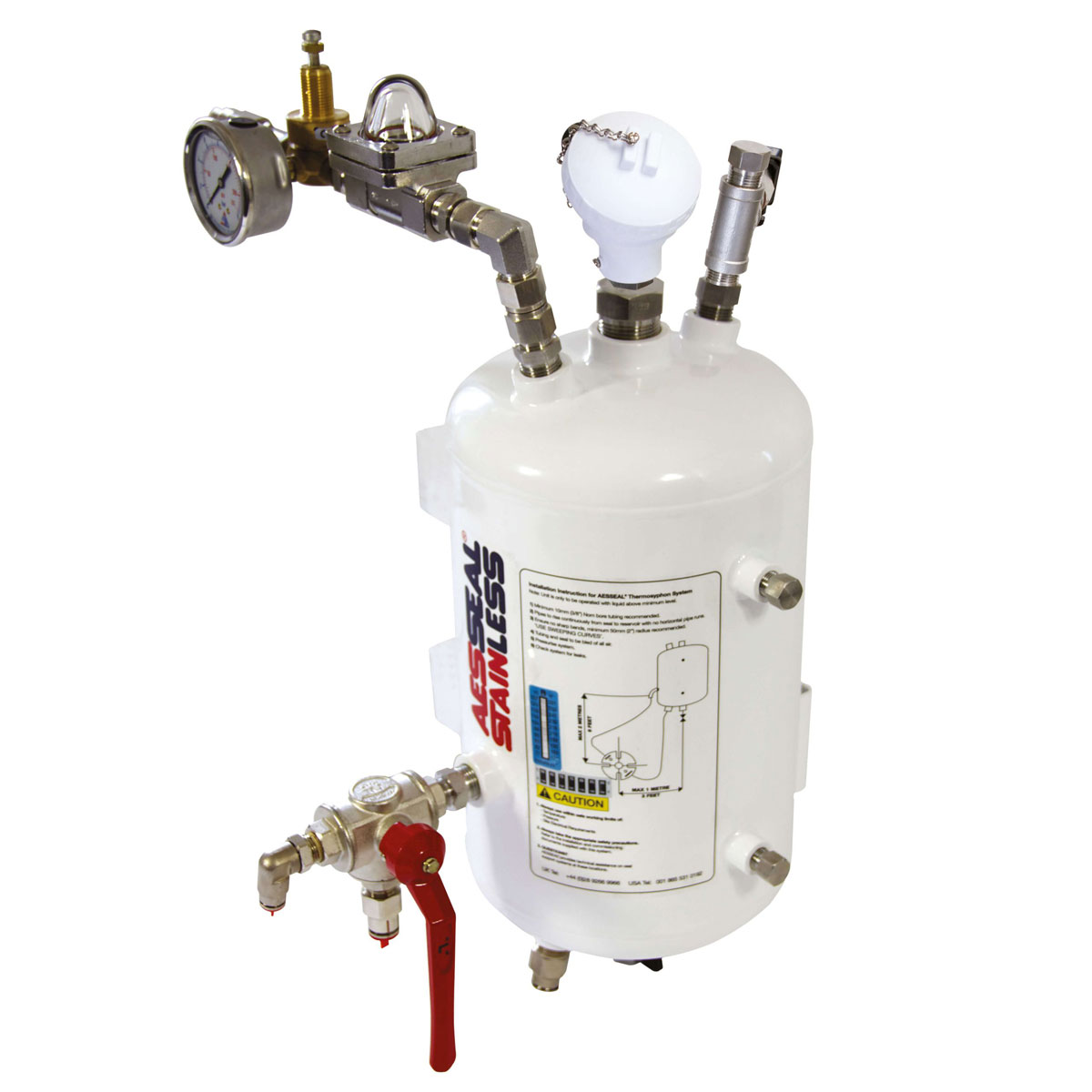
The cooling system in a High Profile office building in the Cardiff Bay area was operating with just a single duty pump and no standby.
With Kristian Herdman
The repeated failure of a seal in the roof level pumping house of a Cardiff office block was proving costly and difficult to deal with due to its height. Technical sales engineer Kristian Herdman explains how AESSEAL® solved the problem by going back to basics, investigating the issue and having the right product available.
How did the contract come about? Did the company approach AESSEAL® or the other way round?
We were approached by a facilities management company based in Cardiff to look at improving the reliability of some seals in a relatively new cooling water recirculation installation that had been failing regularly for approximately nine months.
What was the problem with the competitor’s seal?
The seal was a parallel spring component seal, very typical of the type of seal installed in these types of cooling water circulation pumps. It was becoming contaminated and failing.
What was the problem with the competitor’s seal? Why was it leaking oil?
After a machine revision done by the original equipment manufacturer of the machine, the new oil seal started to leak after two days.
How did AESSEAL® convince the company that the DISP and SW2 water management system was the right solution? How difficult was this?
This was my first dealing with the company, and I worked with the FM company engineer to investigate the existing seals as they failed. Pretty much a rudimentary root cause analysis… We could see that the seals were becoming contaminated with large quantities of abrasive ‘sludge’, which was causing the faces to fail. The FM company found contamination in the building’s closed loop cooling system and tried to remove it using special filtration, however they were unable to completely remove it. Something would periodically disturb the contamination and cause it to be pulled into the pumps.
Was it obvious that a dual seal was needed?
The orientation of the pumps is vertical which means a high risk of dry running. The original seals were supported with API plan13 which we assumed was intended to try and prevent dry running. However, this was never firmly established and did nothing to increase reliability. It became clear that the only way to support the seals from dry running AND contamination was to fit dual seals and Plan 53A.
What makes the DISP superior to and more suitable than the competitor’s seal?
The DISP was selected as it has the smallest overall length. This was important as the pumps had to be jacked up to allow space to slide the seals in from the side before installing over the pump shaft. This was all due to height constraints within the plant room on the roof of the building.
Were there any problems or challenges with the installation? Was it difficult with it being in the roof-level pump house?
Height was the biggest issue. The FM company had to design a safe method of lifting the large motor vertically just enough to allow us to install the seals.
Can you outline what savings or other benefits have resulted from AESSEAL’s solution?
The seals have run incident free since installation. Previously when a seal failed the building air conditioning system would run at a lower capacity, raising the temperature within the offices. This was a big problem for the building management company as they were contracted to ensure smooth operation of the building systems. The final decision was made while we were having a very hot summer and the building’s residents were finding it too hot to work.
Has this contract led to any further business with this company?
Not yet, but I keep in contact with the FM company and the building management company. However, they look after multi-discipline equipment so are not pump-centric.
Can you give any examples of comments/feedback from the company about the quality of the products or services AESSEAL has provided?
Whenever I check in with the engineers, they comment that the system runs with very little intervention or maintenance. It is a far cry from the issues they were experiencing at the time.







